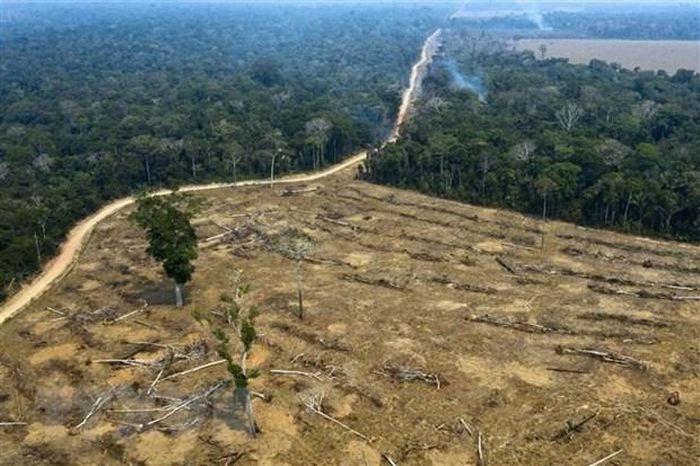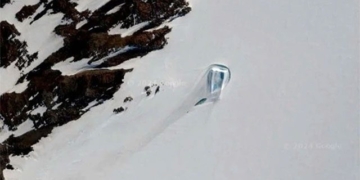A groundbreaking study by a team of 29 international scientists reveals that human activity and appetite have weakened the Earth’s resilience to the point of exceeding the “safe thresholds” that ensure our planet remains a suitable environment for most species, including humans.
According to the study published on September 13, 6 out of 9 planetary boundaries – including climate change, deforestation, biodiversity loss, synthetic chemicals, freshwater depletion, and nitrogen use – have plunged deep into the “red zone.”

Amazon rainforest being destroyed in Porto Velho, Rondonia state, Brazil. (Photo: AFP/TTXVN).
Two of the remaining three boundaries – ocean acidification along with particulate pollution and dust in the atmosphere – are at threshold levels. Only the boundary regarding stratospheric ozone depletion is within the safe limit.
Professor Katherine Richardson from the Global Institute at the University of Copenhagen, the lead author of the study, stated that planetary boundaries define the critical processes that have kept Earth in life-sustaining conditions for the past 10,000 years, a period during which humanity and modern civilization have developed.
Regarding biodiversity, the study indicates that a species extinction rate lower than 10 times the average extinction rate over the last 10 million years is considered acceptable.
However, in reality, extinction is occurring at least 100 times faster than the standard rate and more than 10 times above the planetary boundary.
In terms of climate change, the threshold is determined by the concentration of CO2 in the atmosphere, which was maintained at around 280 parts per million (ppm) for at least 10,000 years before the Industrial Revolution. Today, that concentration is 417 ppm, far exceeding the safe limit of 350 ppm.
Thousands of human-made chemical compounds, from microplastics and pesticides to nuclear waste and pharmaceutical pollutants, have been quantified in this study for the first time and found to exceed safe limits.
A similar situation occurs with the depletion of “green” and “blue” water, referring to freshwater from land, vegetation, and freshwater from rivers and lakes.
Additionally, an important finding of this update is that the various boundaries will complement and amplify each other.
The researchers specifically examined the interaction between rising CO2 concentrations and damage to the biosphere, particularly deforestation, forecasting that Earth’s temperatures will rise as either or both of these factors increase.
This study is the second update on the concept of planetary boundaries. The concept was first published in 2009 when boundaries related to global warming, extinction rates, and nitrogen crossed into the red zone.
The study concludes that all boundaries can be returned to safe levels. Ms. Richardson stated: “The issue is simply setting limits on the waste we emit into the environment, as well as the raw materials we extract from it.”


















































